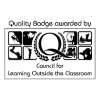
SELECTED DATES in Spring 2024 | Summer 2024 | Autumn 2024 | Winter & Christmas 2024
From the formation of the Nazi Party (National Socialism) in 1919, the following tyrannies of WWII, through to the fall of the Berlin Wall in 1989, the events Berlin has witnessed have all left their mark on the capital, providing a wealth of learning opportunities for students. Our vast experience of organising educational trips to Berlin means we are best placed to provide you and your group with a truly memorable trip.
A Psychology and Sociology trip to Berlin encompasses not only the history of the capital city, but how the city has evolved today. School tours include understanding the psychology and sociological impacts of the holocaust and how such events have shaped the modern metropolis. Students will be able to learn with interesting and factual tours, whilst still enjoying the cultural aspects of what the German capital has to offer. Take a look at a sample itinerary below for your school tour.
Use our sample itinerary to help picture what your trip could look like. Our itineraries are flexible, visits and timings will be planned based on your needs.
We can include specific visits in your itinerary, additional visits can be added based on the trip length and needs of the curriculum or teacher.
Get A QuoteWe can include specific visits in your itinerary, additional visits can be added based on the trip length and needs of the curriculum or teacher.
Get A QuoteAt WST the customer is at the heart of everything we do. A strong set of values runs right from the core of our business. We believe that this is what makes us stand out from the crowd.






Please select a type of trip below:
Need to speak to an expert?
Need to speak to an expert?
Need to speak to an expert?
Your Enquiry has been received by , our school trips provider.
We’ll get back to you within 24 hours via your email or by phone on .
We have been operating school tours for over 35 years so we know a thing or two about planning a school trip. One of the benefits of this is that we have an abundance of knowledge and supporting documents to share with you. In our resources area you will find everything you need for your school trip planning:
Featured Resource
You need to know you can book with a tour operator who has everything covered for you.
This guide will assist you completing your own risk assessments covering areas such as:
Our team of destination specialists will help you find the perfect trip for your group's study needs.
*based on a group of 40 paid places. Prices subject to specific departure dates selected. Enquire for further details.